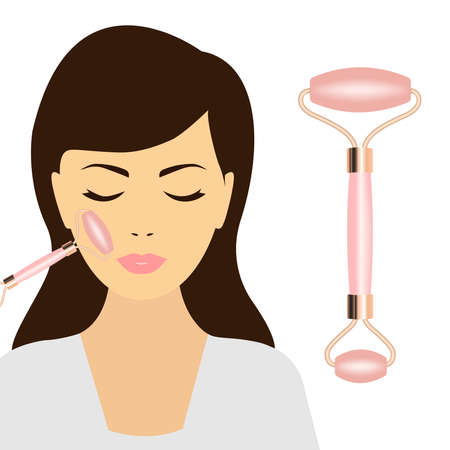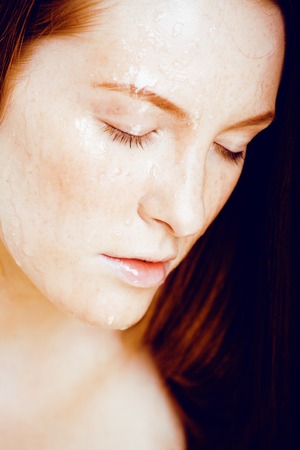Understanding Hard Water in the U.S.
When it comes to skincare, the quality of your tap water can make a bigger difference than you might think—especially if you live in the United States, where hard water is surprisingly common. But what exactly is “hard water”? In simple terms, hard water contains high levels of minerals like calcium and magnesium. These minerals are picked up as water travels through soil and rock before reaching your faucet. While hard water isn’t harmful to drink, it can have a significant impact on your skin health and daily routines.
Hard water is prevalent in many American households, with the Midwest, Southwest, and certain regions of California experiencing some of the highest mineral concentrations in their tap water. If you’ve ever noticed stubborn white spots on your dishes or found that your soap just won’t lather well, chances are you’re dealing with hard water at home.
So how can you tell if your tap water is hard? The easiest way is to look for telltale signs: soap scum residue in sinks or tubs, dry or squeaky skin after showering, or even dullness in hair and clothing after washing. For a more scientific approach, inexpensive home testing kits are widely available at hardware stores and online retailers across the U.S. These kits measure mineral content and give you a clear idea of just how hard your water is—information that’s crucial for making smart skincare choices tailored to American households.
2. How Hard Water Affects Dry Skin
When it comes to dry skin, hard water is a hidden culprit that many Americans overlook. Hard water is characterized by its high mineral content, mainly calcium and magnesium. While these minerals are safe to drink, they can wreak havoc on your skin—especially if you already struggle with dryness or have a sensitive skin type.
Mineral Analysis: Calcium & Magnesium
The two main minerals in hard water are:
| Mineral | How It Affects Skin |
|---|---|
| Calcium | Forms deposits on the skin, blocking pores and making it harder for moisturizers to absorb; can increase flakiness and tightness. |
| Magnesium | Binds with soap, leaving a residue (soap scum) that further strips natural oils from the skin’s surface; often leads to irritation and redness, particularly for those with eczema or sensitive skin. |
Why Does Hard Water Make Skin Drier?
Hard water doesn’t rinse off as easily as soft water, so minerals linger on your skin after you shower or wash your face. These mineral residues disrupt the natural lipid barrier that keeps moisture locked in, leaving your skin vulnerable to dehydration and environmental stressors. Over time, regular exposure to hard water can intensify symptoms like itching, rough patches, and even exacerbate chronic conditions such as atopic dermatitis.
Key Signs of Hard Water Damage
- Persistent dryness and tightness after washing
- Increased flakiness or scaling
- Irritation or redness, especially on sensitive areas
Who Should Be Most Concerned?
If you live in regions like the Midwest, Southwest, or parts of California—where hard water is common—you should be especially mindful. People with naturally dry, sensitive, or eczema-prone skin are most susceptible to irritation caused by mineral buildup.

3. Spotting the Signs: Hard Water vs. Soft Water on Your Skin
When it comes to understanding the impact of your tap water on skin health, knowing how to recognize the signs of hard water is key—especially for Americans living in regions with notoriously mineral-rich water supplies. Hard water contains high levels of calcium and magnesium ions, which can interact with your skin and skincare products in ways that soft water doesn’t. So, what should you look out for if you suspect your tap water might be causing dry or irritated skin?
Common Symptoms Linked to Hard Water Exposure
If you regularly notice tightness, dryness, or itchiness after washing your face or showering, hard water could be to blame. Many Americans report that their skin feels “squeaky clean” after rinsing—but this sensation often means natural oils have been stripped away. Other common symptoms include increased flakiness, rough patches (especially on elbows and knees), and a persistent dullness that’s tough to combat with moisturizers alone.
Increased Sensitivity and Breakouts
Hard water can also make existing skin conditions worse. If you struggle with eczema, psoriasis, or even acne, you might find flare-ups happening more often. The minerals in hard water can clog pores by combining with soap residue, leading to bumps and breakouts—an issue frequently noticed by Americans who move from areas with soft water to those known for harder supplies.
The Soap Factor: Spotting Residue Build-Up
Another tell-tale sign is soap scum left behind on your skin or bathroom fixtures. If you see a white film on your shower doors or sink, chances are your skin is dealing with the same build-up. This residue not only blocks moisture absorption but may also leave your skin feeling sticky or less refreshed after cleansing.
How to Tell If You Have Hard Water at Home
While professional testing kits are available at hardware stores across the U.S., there are some simple at-home checks as well. If it takes extra effort to get soap to lather or if your towels feel stiff after laundering, these are classic signs of hard water in American households. Paying attention to these daily clues can help you connect the dots between your tap water quality and your ongoing skin issues.
Why Identifying Hard Water Matters for Your Skincare Routine
Recognizing the effects of hard versus soft water isn’t just about comfort—it’s essential for tailoring an effective skincare routine that works with, not against, your local environment. By identifying these signs early, Americans can make informed choices about product selection and potential home solutions, setting the stage for healthier, more hydrated skin.
4. Tap Water Quality Across the States
When it comes to managing dry skin, understanding your local tap water quality is crucial—especially in the United States, where water hardness can vary dramatically from state to state and even city to city. Hard water contains high levels of minerals like calcium and magnesium, which can strip your skin of natural oils and worsen dryness. Here’s a quick overview of regional differences and how you can determine what’s coming out of your faucet.
Regional Differences in Water Hardness
Water hardness is measured in milligrams per liter (mg/L) or parts per million (ppm) of dissolved calcium carbonate. Here’s a general snapshot of how tap water quality breaks down across different regions:
| Region | General Hardness Level | Notable Cities/States |
|---|---|---|
| Northeast | Soft to moderately hard | New York City, Boston |
| Southeast | Soft to moderately hard | Atlanta, Miami |
| Midwest | Moderately hard to very hard | Chicago, Detroit, Minneapolis |
| Southwest | Very hard | Phoenix, Las Vegas, Dallas |
| West Coast | Varies: soft near coasts, harder inland | Los Angeles (hard), Seattle (soft) |
How to Find Out Your Local Tap Water Profile
If you’re not sure about your local water hardness, here are some practical tips:
- Check Your Utility’s Annual Water Quality Report: Most municipal water suppliers publish an annual Consumer Confidence Report (CCR). You can usually find this on your utility’s website or request a copy directly.
- Use Online Databases: Resources like the Environmental Working Group (EWG) Tap Water Database or the US Geological Survey provide searchable information by zip code.
- DIY Testing Kits: Home water hardness test kits are available at hardware stores or online retailers like Amazon. They’re easy to use and give quick results.
- Anecdotal Clues: Notice spots on your dishes or difficulty lathering soap? These are classic signs of hard water.
The Bottom Line for Your Skin Routine
Your tap water profile isn’t just trivia—it plays a direct role in your skincare results. Knowing whether you have soft or hard water helps you adjust your cleansing routine and product choices for healthier, more hydrated skin.
5. Expert Skincare Strategies for Managing Dry Skin
Understanding the Impact of Hard Water on Your Skin
For Americans living in regions with hard tap water, dry skin isn’t just a seasonal annoyance—it’s often an everyday battle. The minerals found in hard water, like calcium and magnesium, can interact with skincare products and strip natural oils from your skin. This means your usual routine may need a makeover with formulas specifically designed to counteract these harsh effects.
Choosing the Right Cleanser: Gentle and SLS-Free
Start your routine with a gentle, sulfate-free (SLS-free) cleanser. Traditional foaming cleansers can react with hard water minerals, leaving residue that worsens dryness and irritation. Look for hydrating ingredients like glycerin, ceramides, and panthenol. These components help retain moisture while effectively cleansing away impurities without further disrupting your skin barrier.
The Power of Micellar Water
Micellar waters are a smart choice for those exposed to hard water. Their unique micelle technology gently lifts dirt and oil without needing to rinse excessively—a bonus when you want to limit tap water contact. Opt for fragrance-free options containing niacinamide or aloe vera for extra soothing benefits.
Toners and Essences: Replenish What Hard Water Takes Away
If your skin feels tight after washing, consider layering a hydrating toner or essence. Look for ingredients such as hyaluronic acid, squalane, or beta-glucan, which attract and lock in moisture. In the U.S., many brands now offer alcohol-free toners that avoid further drying out your skin—a must-have if you’re dealing with both hard water and dryness.
Moisturizers That Make a Difference
Your moisturizer should work overtime against American hard water conditions. Choose creams rich in ceramides, shea butter, or fatty acids. These replenish the lipids your skin loses due to mineral-heavy tap water. Look for labels mentioning “barrier repair” or “for very dry skin.” For daytime, use lighter lotions enhanced with squalane; at night, layer on thicker balms or ointments featuring petrolatum or lanolin.
Add an Occlusive Layer for Extra Protection
If you have extremely dry patches, try slugging—an American skincare trend that involves applying a thin layer of petrolatum-based ointment as the last step at night. This locks in all previous layers of hydration and shields your skin from overnight moisture loss exacerbated by hard water exposure during the day.
Sunscreen: The Final Essential Step
No matter where you live in the U.S., daily sunscreen is critical. Mineral sunscreens containing zinc oxide or titanium dioxide are gentle on sensitive, dry skin and create an additional barrier against environmental stressors—including those triggered by hard tap water.
Your Ingredient-Focused Routine Recap:
- Sulfate-free cleanser (glycerin, ceramides)
- Micellar water (niacinamide, aloe vera)
- Alcohol-free toner/essence (hyaluronic acid, squalane)
- Ceramide-rich moisturizer (shea butter, fatty acids)
- Pertolatum-based ointment for slugging (as needed)
- Mild mineral sunscreen (zinc oxide, titanium dioxide)
By making these ingredient-conscious swaps in your daily routine, Americans facing hard water can dramatically improve their dry skin concerns—and keep their complexion healthy year-round.
6. Everyday Solutions: What You Can Do at Home
Make Your Water Work for You
If you live in an area with hard tap water, you don’t have to just accept dry, tight-feeling skin as your new normal. There are simple, affordable ways to make your home water routine more skin-friendly. Here’s how you can start making changes today:
Install a Water Softener
Water softeners are a popular solution across many U.S. households dealing with hard water. These systems replace the calcium and magnesium ions (the minerals responsible for hardness) with sodium or potassium ions, making the water gentler on your skin. While it’s a bigger investment up front, a whole-house softener can help not only your skin but also your laundry, appliances, and plumbing.
Use a Shower Filter
If installing a full water softening system isn’t in your budget, try a shower filter instead. Many Americans opt for these easy-to-install devices that attach directly to your showerhead. They help filter out minerals and even some chlorine, offering noticeable relief for dry or sensitive skin without major renovations.
Tweak Your Shower Routine
- Shorten Your Showers: Hot, long showers might feel relaxing, but they strip natural oils from your skin—especially when combined with hard water.
- Lower the Temperature: Use lukewarm rather than hot water to minimize irritation and moisture loss.
- Pat, Don’t Rub Dry: Gently pat yourself dry with a towel after bathing instead of rubbing vigorously.
Switch Up Your Skincare Products
- Mild Cleansers: Choose gentle, fragrance-free cleansers that won’t further dry out your skin. Avoid soaps with harsh detergents or sulfates (like SLS or SLES).
- Creamy Moisturizers: Apply rich moisturizers right after showering to lock in hydration. Look for formulas containing ceramides, hyaluronic acid, or glycerin.
Avoid Over-Exfoliating
Hard water can already be tough on your skin barrier. Try to limit physical and chemical exfoliation to once or twice a week so you don’t worsen dryness or sensitivity.
The Bottom Line
You don’t have to overhaul your entire lifestyle to protect your skin from hard water. By making a few practical changes—like using filters, adjusting your shower habits, and picking the right skincare products—you can keep your skin feeling healthy and comfortable no matter what’s coming out of the tap.
7. When to Seek Help: Consulting with a Dermatologist
Sometimes, no matter how many hydrating creams or gentle cleansers you try, dry skin just wont budge—especially if you live in an area with hard tap water. If your dryness is persistent, itchy, flaky, or even leads to cracking and irritation, it might be time to seek professional advice. Here’s how to know when to consult a dermatologist and how to discuss your hard water concerns effectively.
Recognizing When Home Remedies Aren’t Enough
If you’ve switched up your routine—using fragrance-free moisturizers, installing a water softener, and limiting hot showers—but still see little improvement after several weeks, this could be a sign that your dry skin needs more than just at-home care. Severe symptoms like redness, inflammation, eczema flare-ups, or signs of infection should prompt a visit to a dermatologist.
Preparing for Your Appointment
When booking your dermatologist appointment, keep track of your symptoms: when they started, what products you’ve used, and whether you notice changes after exposure to tap water. Bring this information with you—it will help your specialist assess the situation more accurately.
Communicating Hard Water Concerns
Don’t hesitate to mention hard water during your visit; it’s a common issue across many parts of the U.S., especially in areas like the Midwest and Southwest. Explain any patterns you’ve noticed—such as increased dryness after showering or washing your face—and ask if hard water might be contributing to your symptoms. Dermatologists can recommend targeted treatments or prescribe medicated creams tailored for stubborn dry skin caused by environmental factors like mineral-heavy tap water.
Your Skin Deserves Expert Care
Persistent dry skin isn’t just uncomfortable—it can impact your confidence and overall health. By seeking professional help and openly discussing all possible factors (including hard water), you’ll be taking an important step toward healthier, more resilient skin. Remember: You’re not alone, and effective solutions are available.

